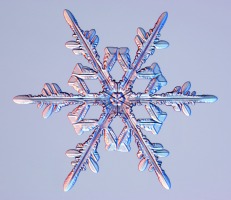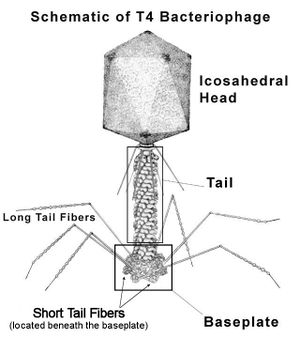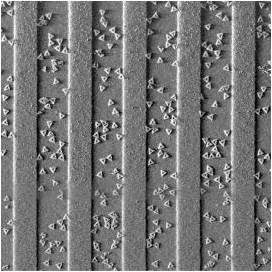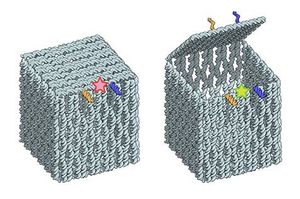Difference between revisions of "Main Page"
| Line 23: | Line 23: | ||
Self-assembling systems abound in nature, and include the formation of everything from snowflakes, to biological structures (e.g. viruses), to galaxies. Nature creates some of the most complex structures known using self-assembly, and we attempt to study and understand these natural systems so that we can create novel, artificial self-assembling systems. The eventual goal is atomically precise manufacturing, in which the end products are produced so that their constituent atoms and molecules are completely positioned by design. This promises the creation of materials which are smaller, stronger, lighter, and in possession of additional desired properties that traditional materials can't match. | Self-assembling systems abound in nature, and include the formation of everything from snowflakes, to biological structures (e.g. viruses), to galaxies. Nature creates some of the most complex structures known using self-assembly, and we attempt to study and understand these natural systems so that we can create novel, artificial self-assembling systems. The eventual goal is atomically precise manufacturing, in which the end products are produced so that their constituent atoms and molecules are completely positioned by design. This promises the creation of materials which are smaller, stronger, lighter, and in possession of additional desired properties that traditional materials can't match. | ||
| − | examples. | + | Even though this research field is still young, there are already exciting examples of nanoscale self-assembly occurring in laboratories around the world. For example, work is being done to use self-assembly to guide the fabrication of next generation processors, and researchers have created boxes made out of DNA which may eventually be used to deliver drugs to highly specific targets in the body. |
| − | Pioneers in self-assembly research realized the potential for new systems to be algorithmically driven.. | + | [[File:IBM-Caltech.jpg|thumb|alt=Self-assembly to guide processor fabrication|Self-assembled structures used to create nanoscale patterns and assist in processor fabrication. Credit: PRNewsFoto/IBM.]] |
| + | |||
| + | [[File:3D-box-sketch.jpg|thumb|alt=3D box|Credit: Ebbe S. Anderson, Aarhus University]] | ||
| + | |||
| + | [[File:3D-box-TEM.jpg|thumb|alt=3D box|Credit: Ebbe S. Anderson, Aarhus University]] | ||
| + | |||
| + | Pioneers in self-assembly research realized the potential for new systems to be algorithmically driven. This has resulted in a rich body of research into algorithmic self-assembly, which constitutes the bulk of the content on this site. | ||
Revision as of 22:47, 3 December 2011
Welcome to the self-assembly group wiki. The purpose of this website is to serve as a common repository for papers and articles in the field of algorithmic self-assembly, as well as a technically oriented, easy to use wiki about self-assembly topics. Researchers in the area are invited and encouraged to contribute content including wiki articles, papers, and software. Please email mpatitz@self-assembly.net if you are interested in contributing.
What is self-assembly?
Self-assembly is the process during which a collection of relatively simple components, starting in a disorganized state, autonomously combine into a more complex structure. During self-assembly, there is no external guidance or direction, and the self-assembling components experience only local interactions and typically obey a simple set of rules that govern how they combine.
Self-assembling systems abound in nature, and include the formation of everything from snowflakes, to biological structures (e.g. viruses), to galaxies. Nature creates some of the most complex structures known using self-assembly, and we attempt to study and understand these natural systems so that we can create novel, artificial self-assembling systems. The eventual goal is atomically precise manufacturing, in which the end products are produced so that their constituent atoms and molecules are completely positioned by design. This promises the creation of materials which are smaller, stronger, lighter, and in possession of additional desired properties that traditional materials can't match.
Even though this research field is still young, there are already exciting examples of nanoscale self-assembly occurring in laboratories around the world. For example, work is being done to use self-assembly to guide the fabrication of next generation processors, and researchers have created boxes made out of DNA which may eventually be used to deliver drugs to highly specific targets in the body.
Pioneers in self-assembly research realized the potential for new systems to be algorithmically driven. This has resulted in a rich body of research into algorithmic self-assembly, which constitutes the bulk of the content on this site.
Getting started
- Topics in self-assembly
- List of papers
- List of conferences
- List of open problems
- List of software
- People
- Add a paper





